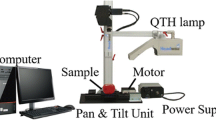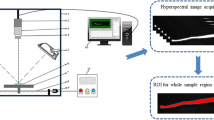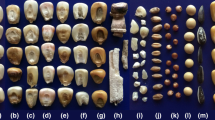Abstract
A rapid, robust, unbiased, and inexpensive discriminant method capable of classifying hazelnut (Corylus avellana, L.) in compliance with the statements set out by the Commission Regulation (EC) No. 1284/2002 is economically important to the fresh and processed industries. Thus, in this study, the feasibility of high dynamic range (HDR) hyperspectral imaging for hazelnut kernel sorting (cv. Tonda Gentile Romana) of four quality classes (Class Extra, Class I, Class II, and Waste) has been investigated. Two different exposure times (5 and 8 ms) were selected for experiments, and the respective spectra were combined to obtain a HDR over the full spectral range. The illumination setup was optimized to improve the intensity and uniformity of the light along the field of view of the camera. PLS-DA was used to classify the kernels based on their spectra and the spectral pretreatment was optimized through an iterative routine. The performance of each PLS-DA model was defined based on its accuracy, sensitivity, and selectivity rates. All of the selected models provided a very good (>90 %) or good (>80 %) sensitivity and selectivity for the predefined classes. Misclassified kernels were primarily assigned to the low-quality classes (i.e., Class II and Waste). Moreover, the spatial domain was used to evaluate the feasibility of distinguishing hazelnut classes on the basis of their size and shape. It was found that hazelnut dimensions can be used to improve the accuracy of the classification of the kernels. Thanks to this combination of both spectral and spatial information spectral imaging could be used for quality sorting of hazelnuts.








Similar content being viewed by others
References
Alasalvar, C., & Shahidi, F. (2008). In C. Alasalvar & F. Shahidi (Eds.), Tree nuts: Composition, phytochemicals, and health effects (1st ed.). Boca Raton: CRC Press.
Amaike, S., & Keller, N. P. (2011). Aspergillus flavus. Annual Review of Phytopathology, 49, 107–133.
Armenta, S., Garrigues, S., & de la Guardia, M. (2007). Determination of edible oil parameters by near infrared spectrometry. Analytica Chimica Acta, 596(2), 330–337. doi:10.1016/j.aca.2007.06.028.
Boysworth, M. K., & Booksh, K. S. (2008). Aspects of multivariate calibration applied to near-infrared spectroscopy. In D. A. Burns & E. W. Ciurczak (Eds.), Handbook of near-infrared analysis (3rd ed., pp. 207–229). New York, USA: CRC Press.
Capinera, J. L. (2001). Order Hemiptera—bugs. In Handbook of vegetable pests (pp. 243–278). New York: Academic.
Cecchini, M., Contini, M., Massantini, R., Monarca, D., & Moscetti, R. (2011). Effects of controlled atmospheres and low temperature on storability of chestnuts manually and mechanically harvested. Postharvest Biology and Technology, 61, 131–136.
Christy, A., Kasemsumran, S., Du, Y., & Ozaki, Y. (2004). The detection and quantification of adulteration in olive oil by near-infrared spectroscopy and chemometrics. Analytical Sciences: The International Journal of the Japan Society for Analytical Chemistry, 20(6), 935–940.
Chun, J., Lee, J., & Eitenmiller, R. R. (2006). Vitamin E and oxidative stability during storage of raw and dry roasted peanuts packaged under air and vacuum. Journal of Food Science, 70(4), 292–297.
Contini, M., Frangipane, M. T., & Massantini, R. (2011). Antioxidants in hazelnuts (Corylus avellana L.). In V. R. Preedy, R. R. Watson, & V. B. Patel (Eds.), Nuts & seeds in health and disease prevention (pp. 611–625). London: Academic.
Dejaegher, B., Dhooghe, L., Goodarzi, M., Apers, S., Pieters, L., & Vander Heyden, Y. (2011). Classification models for neocryptolepine derivatives as inhibitors of the β-haematin formation. Analytica Chimica Acta, 705(1–2), 98–110.
ElMasry, G., Kamruzzaman, M., Sun, D.-W., & Allen, P. (2012). Principles and applications of hyperspectral imaging in quality evaluation of agro-food products: a review. Critical Reviews in Food Science and Nutrition, 52(11), 999–1023.
ElMasry, G., & Sun, D.-W. (2010). Principles of hyperspectral imaging technology. In D.-W. Sun (Ed.), Hyperspectral imaging for food quality analysis and control (pp. 3–43). London: Academic.
European Commission. (2002). Commission Regulation (EC) No. 1284/2002 of 15 July 2002 laying down the marketing standard for hazelnuts in shell. Official Journal of the European Union (L), 187, 14–20.
Ghirardello, D., Contessa, C., Valentini, N., Zeppa, G., Rolle, L., Gerbi, V., & Botta, R. (2013). Effect of storage conditions on chemical and physical characteristics of hazelnut (Corylus avellana L.). Postharvest Biology and Technology, 81, 37–43.
Goodarzi, M., Heyden, Vander, Y., & Funar-Timofei, S. (2013). Towards better understanding of feature-selection or reduction techniques for quantitative structure–activity relationship models. TrAC Trends in Analytical Chemistry, 42, 49–63.
Kibar, H., & Öztürk, T. (2009). The effect of moisture content on the physico-mechanical properties of some hazelnut varieties. Journal of Stored Products Research, 45(1), 14–18.
Köksal, A. İ., Artik, N., Şimşek, A., & Güneş, N. (2006). Nutrient composition of hazelnut (Corylus avellana L.) varieties cultivated in Turkey. Food Chemistry, 99(3), 509–515.
Massantini, R., Moscetti, R., Monarca, D., Cecchini, M., Contini, M., & Mordacchini, L. (2009). The influence of cover crops and double harvest on storage of fresh hazelnuts (Corylus avellana L.). Advances in Horticultural Science, 23(4), 231–237.
Miles, P. W. (1972). The saliva of hemiptera. Advances in Insect Physiology, 9, 183–255.
Montgomery, D. C. (2001). Design and analysis of experiments (5th ed., p. 699). New York: Wiley.
Moscetti, R., Frangipane, M. T., Monarca, D., Cecchini, M., & Massantini, R. (2012). Maintaining the quality of unripe, fresh hazelnuts through storage under modified atmospheres. Postharvest Biology and Technology, 65, 33–38.
Moscetti, R., Haff, R. P., Aernouts, B., Saeys, W., Monarca, D., Cecchini, M., & Massantini, R. (2013). Feasibility of Vis/NIR spectroscopy for detection of flaws in hazelnut kernels. Journal of Food Engineering, 118, 1–7.
Moscetti, R., Haff, R. P., Saranwong, S., Monarca, D., Cecchini, M., & Massantini, R. (2014a). Nondestructive detection of insect infested chestnuts based on NIR spectroscopy. Postharvest Biology and Technology, 87, 88–94.
Moscetti, R., Monarca, D., Cecchini, M., Haff, R. P., Contini, M., & Massantini, R. (2014b). Detection of mold-damaged chestnuts by near-infrared spectroscopy. Postharvest Biology and Technology, 93, 83–90.
Naes, T., Isaksson, T., Fearn, T., & Davies, T. (2004). A user-friendly guide to multivariate calibration and classification (p. 344). Chichester, UK: NIR publications.
Nguyen Do Trong, N., Tsuta, M., Nicolaï, B. M., De Baerdemaeker, J., & Saeys, W. (2011). Prediction of optimal cooking time for boiled potatoes by hyperspectral imaging. Journal of Food Engineering, 105(4), 617–624.
Nicolaï, B. M., Beullens, K., Bobelyn, E., Peirs, A., Saeys, W., Theron, K. I., & Lammertyn, J. (2007). Nondestructive measurement of fruit and vegetable quality by means of NIR spectroscopy: a review. Postharvest Biology and Technology, 46(2), 99–118.
Ottavian, M., Fasolato, L., Serva, L., Facco, P., & Barolo, M. (2014). Data fusion for food authentication: fresh/frozen–thawed discrimination in West African Goatfish (Pseudupeneus prayensis) fillets. Food and Bioprocess Technology, 7(4), 1025–1036.
Özdemir, M., Seyhan, F. G., Bakan, A. K., Ilter, S., Özay, G., & Devres, O. (2001). Analysis of internal browning of roasted hazelnuts. Food Chemistry, 73(2), 191–196.
Parcerisa, J., Richardson, D. G., Rafecas, M., Codony, R., & Boatella, J. (1997). Fatty acid distribution in polar and nonpolar lipid classes of hazelnut oil (Corylus avellana L.). Journal of Agricultural and Food Chemistry, 45(10), 3887–3890.
Pearson, T. C. (1999). Spectral properties and effect of drying temperature on almonds with concealed damage. LWT - Food Science and Technology, 32(2), 67–72.
Savitzky, A., & Golay, M. J. E. (1964). Smoothing and differentiation of data by simplified least squares procedures. Analytical Chemistry, 36(8), 1627–1639.
Shahidi, F., & Miraliakbari, H. (2005). Tree nut oils. In F. Shahidi (Ed.), Bailey’s industrial oil and fat products (6th ed., pp. 175–193). Hoboken: Wiley.
Sipahioglu, H. N., & Heperkan, D. (2000). Lipolytic activity of Trichothecium roseum on hazelnut. Food Microbiology, 17(4), 401–405.
Tallada, J. G., Wicklow, D. T., Pearson, T. C., & Armstrong, P. R. (2011). Detection of fungus infected corn kernels using near infrared reflectance spectroscopy and color imaging. Transactions of the ASABE, 54(3), 1151–1158.
USDA. (2014). National nutrient database for standard reference—release 26. URL http://ndb.nal.usda.gov/ndb/search/list. Accessed 03.12.14.
Vaccinio, P., Guidone, L., Corbellini, M., & Tavella, L. (2008). Detection of damage due to bug feeding on hazelnut and wheat by biochemical techniques. Bulletin of Insectrology, 61(1), 189–190.
Vitale, R., Bevilacqua, M., Bucci, R., Magrì, A. D., Magrì, A. L., & Marini, F. (2013). A rapid and non-invasive method for authenticating the origin of pistachio samples by NIR spectroscopy and chemometrics. Chemometrics and Intelligent Laboratory Systems, 121, 90–99.
Wang, W., Li, C., Tollner, E. W., Rains, G. C., & Gitaitis, R. D. (2012). A liquid crystal tunable filter based shortwave infrared spectral imaging system: calibration and characterization. Computers and Electronics in Agriculture, 80, 135–144.
Wise, B. M. (2009). Eigen vector research wiki - using cross-validation. URL http://wiki.eigenvector.com. Accessed 02.21.2014.
Workman, J., & Weyer, L. (2008). Practical guide to interpretive near-infrared spectroscopy (p. 344). London: CRC Press.
Wu, W., Mallet, Y., & Walczak, B. (1996). Comparison of regularized discriminant analysis linear discriminant analysis and quadratic discriminant analysis applied to NIR data. Analytica Chimica Acta, 2670(96), 257–265.
Yildiz, G., Wehling, R. L., & Cuppett, S. L. (2001). Method for determining oxidation of vegetable oils by near-infrared spectroscopy. Journal of the American Oil Chemists’ Society, 78(5), 495–502.
Acknowledgments
This research has been financially supported by Mipaaf through the project “Miglioramento della filiera corilicola laziale - Mi.F.CO.L.” represented by the “AOP Nocciola Italia Soc. Cons. s.r.l” and “CeFAS - Azienda speciale CCIAA Viterbo”. The authors gratefully acknowledge I.W.T.-Flanders for the financial support through the Chameleon project (IWT 100021).
Author information
Authors and Affiliations
Corresponding author
Rights and permissions
About this article
Cite this article
Moscetti, R., Saeys, W., Keresztes, J.C. et al. Hazelnut Quality Sorting Using High Dynamic Range Short-Wave Infrared Hyperspectral Imaging. Food Bioprocess Technol 8, 1593–1604 (2015). https://doi.org/10.1007/s11947-015-1503-2
Received:
Accepted:
Published:
Issue Date:
DOI: https://doi.org/10.1007/s11947-015-1503-2




